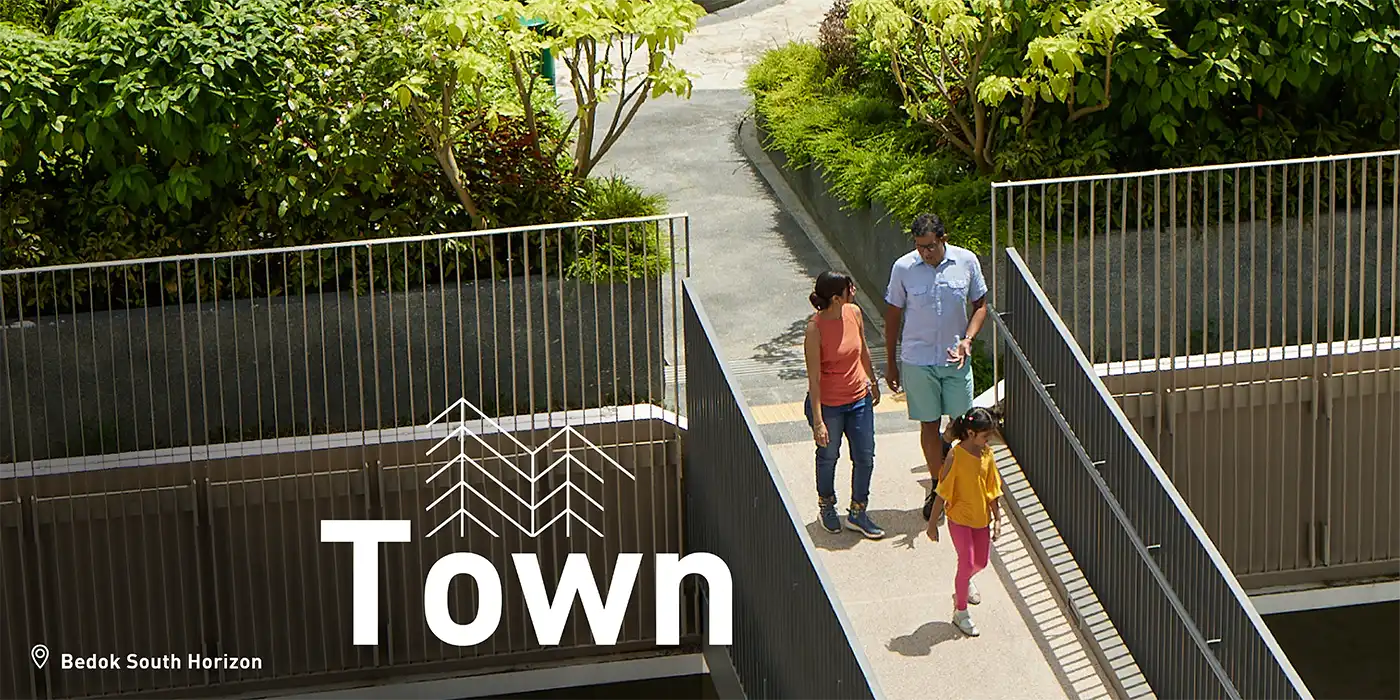
Developing Liveable and Sustainable Towns
Guided by the Designing for Life roadmap, HDB continued to embrace innovative solutions in the way we design and build homes, to achieve the goal of creating liveable and sustainable towns.
Pilot Health District to Support Holistic Well-Being
In October 2021, HDB, together with the National University Health System (NUHS) and the National University of Singapore (NUS), announced plans to develop the Health District @ Queenstown.
Health District @ Queenstown is part of HDB’s Designing for Life roadmap. Under the roadmap’s ‘Live Well’ pillar, we aim to create ‘Healthy Towns for All Ages’ as part of a holistic approach to enhance residents’ physical, social, and mental well-being.
The health district is a first-of-its-kind multi-stakeholder collaboration that will draw from a broad range of expertise to create integrated solutions to enhance health and well-being across all ages. There will be more integrated planning and design of Queenstown informed by scientific evidence and community-driven programmes to support residents in leading healthier and more productive lives. Successful initiatives piloted at Health District @ Queenstown could be scaled across Singapore.
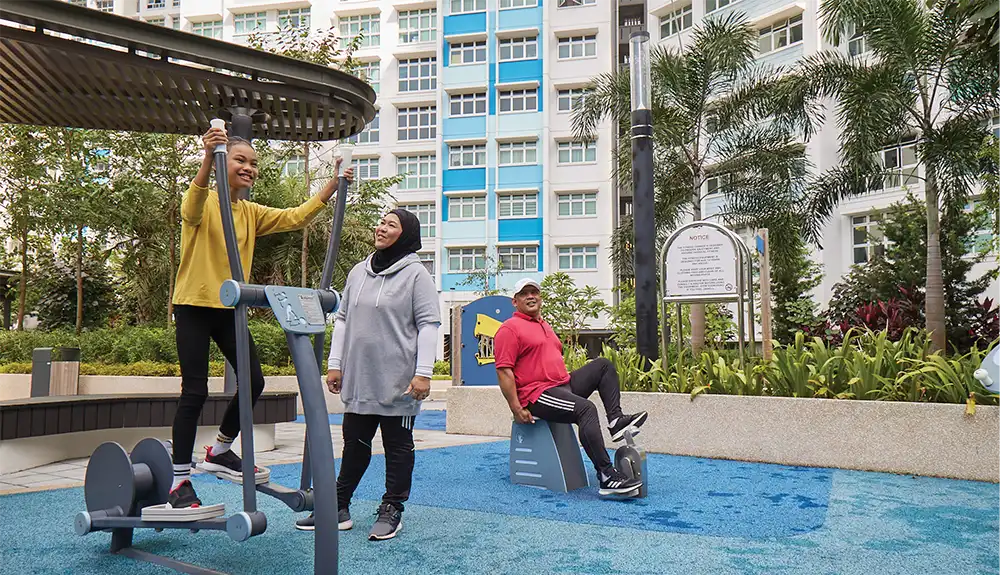
Planning With the Environment in Mind
To meet strong housing demand, HDB announced plans for new housing areas in Ulu Pandan and Mount Pleasant. These areas will be sensitively designed with the environment in mind.
For Ulu Pandan, we carried out an Environmental Baseline Study, and engaged nature groups and the public on the proposed plans for the area. After considering stakeholders’ feedback, we revised our planning and design strategies for Ulu Pandan, taking a holistic and science-based approach to balance development and nature conservation. The eastern half of the Ulu Pandan site will be developed for public housing from 2022, while a sizeable nature park will be safeguarded on the more biodiverse western half and its plans to be reviewed in future. Residents can look forward to new homes, amenities, and recreational spaces nestled in verdant greenery, along with blue elements such as the existing Ulu Pandan Canal and the retention of a natural stream in the eastern half of Ulu Pandan.

The new housing estate in Mount Pleasant, located near Toa Payoh town, is envisioned to provide about 5,000 new homes when completed. Recognising the lush greenery and rich heritage of the Old Police Academy in this area, we piloted a detailed heritage study and an Environmental Impact Study to assess the heritage and ecological value of the area, to guide future development plans and mitigate the potential impact to both its natural and built environment. Relevant agencies and various stakeholders such as heritage and nature groups, as well as the police community, were consulted on the proposed development plans so we could hear their feedback.
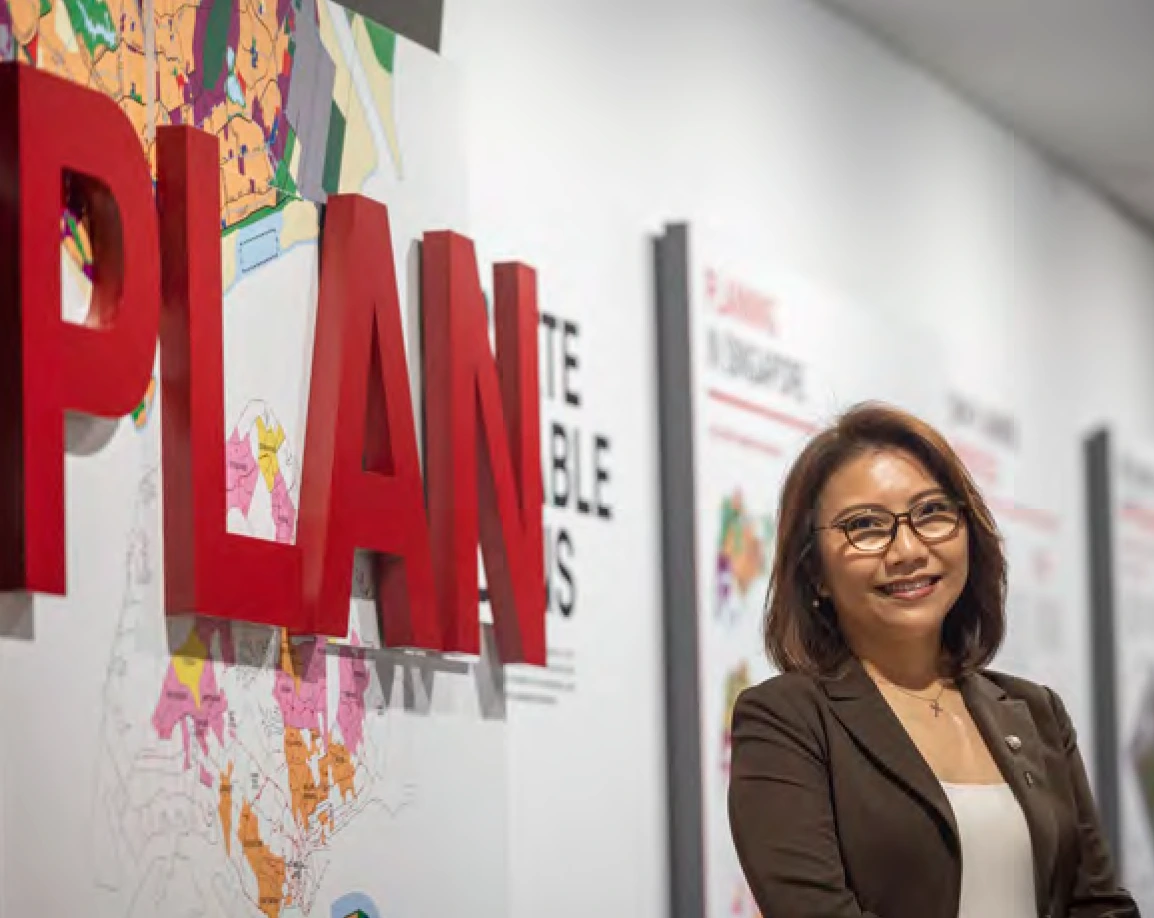
Balancing conservation while meeting various land use needs, including housing, is an extremely delicate balancing act. Shu Ying oversaw the development plans for the Ulu Pandan estate and was also heavily involved in the engagement sessions that HDB held with different stakeholders.
“Many different communities, from nature groups to residents as well as students nearby, feel strongly connected to Ulu Pandan and wanted a say in our development plans for housing in the area. Our team spent many months going through every piece of feedback — there were many diverse perspectives — and even met up with various groups to hear out their concerns and feedback, and help them better understand the constraints and trade-offs. While it required a great amount of dedication, it was a worthwhile effort that has helped to deepen understanding as well as build trust and partnership.”
Lim Shu Ying
Director of Urban Design
Innovative Green and Smart Solutions
Our vision of bringing sustainable living to all HDB towns, including existing ones, remained on track this FY. Under the HDB Green Towns Programme, a key initiative under the SG Green Plan to build a greener Singapore, we rolled out several green and smart solutions aimed at enhancing residents’ living environment and improving their quality of life.
Residents of 130 blocks in Tampines can enjoy a cooler living environment when their blocks are painted with cool paint — a type of paint that reflects the heat of the sun and can reduce ambient temperatures by up to 2°C. The pilot will pave the way for the use of cool paint in more HDB towns, to mitigate urban heat island effect.
This FY, we announced that our Urban Water Harvesting System (UWHS) will be piloted in existing estates for the first time, covering 89 blocks in Yishun and Jurong. The system has been installed in selected Build-To-Order (BTO) projects since 2018. With the UWHS, rainwater can be harvested for non-potable uses at the common areas. It is estimated that 15 UWHSs will be installed, potentially reaping water savings of about 17,500m3 per year, or the average yearly potable water consumption of over 85 4-room HDB flats.
We also launched the seventh SolarNova tender in FY2021, which would see around 75 MWp of solar photovoltaic (PV) panels installed across HDB blocks as well as government sites. With this latest tender, HDB has committed a total solar capacity of 380MWp, equivalent to powering around 95,000 4-room flats with solar energy - bringing us a step closer towards realising our solar target of 540MWp by 2030.
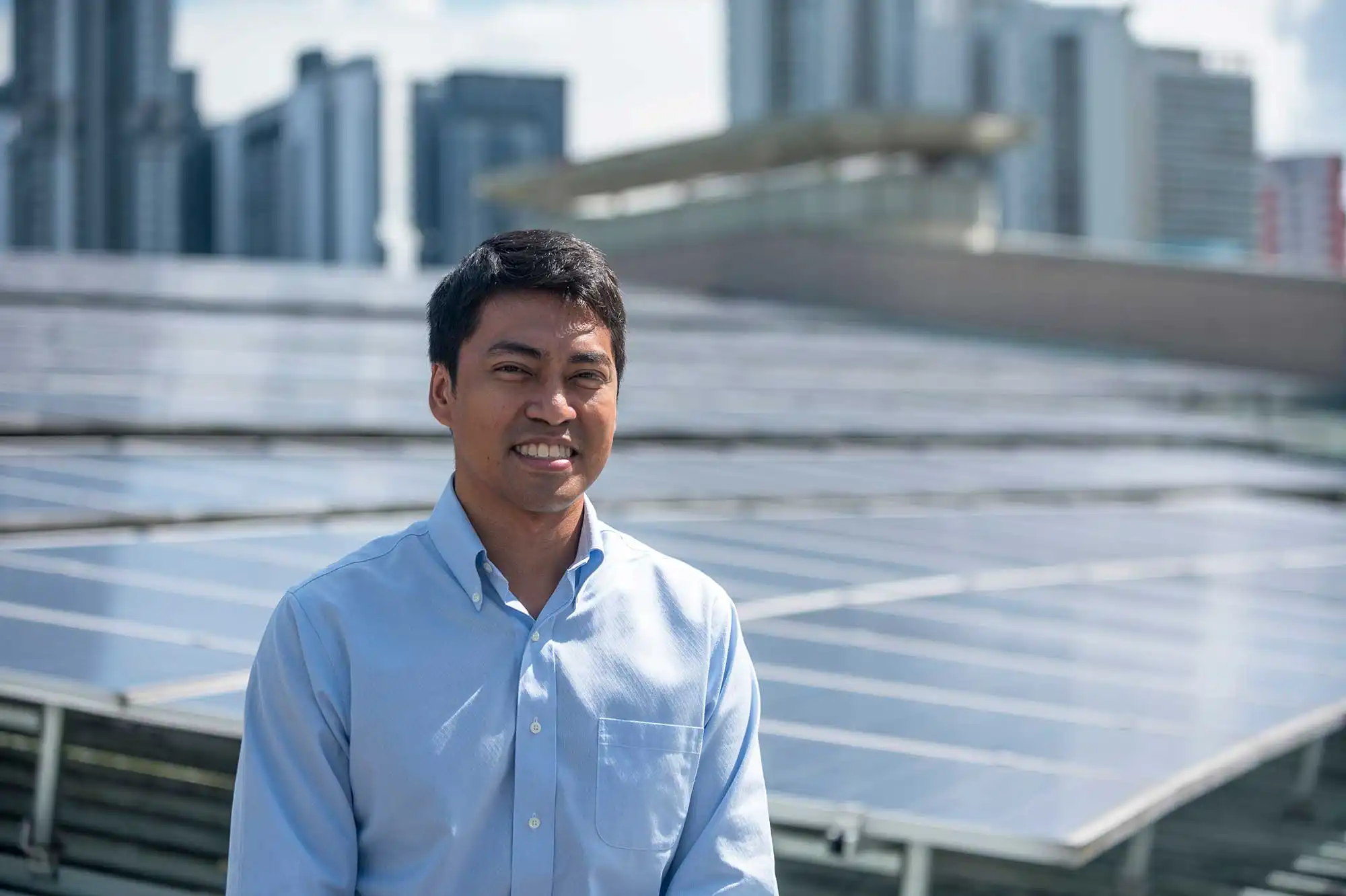
Murugan leads a team that drives the large-scale deployment of solar panels at HDB blocks and government sites, as part of the HDB Green Towns Programme to make HDB towns more sustainable and liveable.
In this
FY, the team launched the seventh SolarNova tender, continuing to drive the growth of Singapore’s solar industry in a cost-efficient way. On average, HDB blocks with solar panels installed can achieve net-zero
energy consumption at the common areas during the day.
“Many things we do daily, such as driving cars and powering our appliances, emit greenhouse gases and affect the climate.
One way to mitigate climate change is to tap on sources of renewable energy, such as solar. HDB manages over 10,000 residential blocks, which gives us a lot of rooftop space to install solar panels under the
SolarNova programme. It’s satisfying when we get public agencies on board the programme because our collective efforts can help reduce Singapore’s carbon footprint.”
Sai Murugan Pandit
Deputy Director of Mechanical & Electrical Innovation
Transforming Our Commercial Properties
There were 17,893 commercial properties under HDB’s management as of FY2021, with the average occupancy rate remaining high at 96%. In this FY, 369 commercial units were leased out, and 121 shops/ eating houses/ supermarkets were completed.
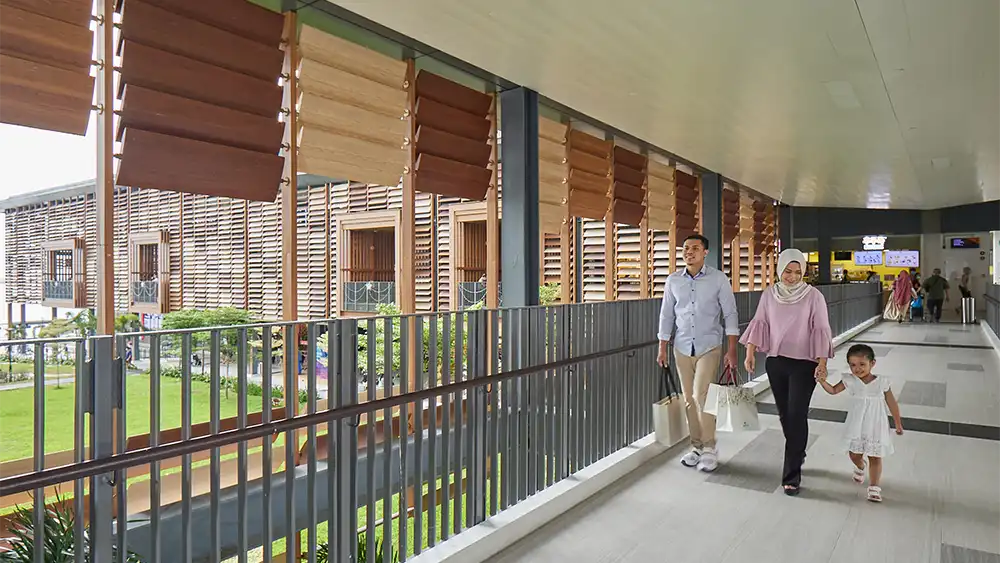
Northshore Plaza, HDB’s latest new generation neighbourhood centre (NC), started operations in October 2021. Northshore Plaza is the first seafront NC and is seamlessly connected to residential blocks and an LRT station, offering residents convenient access to a suite of lifestyle retail shops and family-friendly restaurants.
Located in Punggol’s Northshore District, a smart and sustainable district, the NC will incorporate sustainable features and testbed various smart solutions such as smart fans, smart lighting and a smart carpark management system.
Over in Yew Tee, residents can look forward to a new integrated development that will be built in the next few years. Called Heart of Yew Tee, the development will house a wide range of social, healthcare, communal, commercial, and retail facilities, such as a hawker centre, a Community Club, and a polyclinic. There will also be flats for seniors, to offer them a convenient living environment.
Strengthening Construction Productivity
HDB achieved an overall productivity improvement of 26.2% for projects completed in 2021, compared to the base year of 2010, as we continued to strengthen our construction productivity with the adoption of innovative technologies.
One such example is the Integrated Digital Delivery (IDD) approach for our building projects, which integrates digital technologies through the entire project lifecycle to improve collaboration among stakeholders and construction efficiency. A key component of IDD is Virtual Design & Construction (VDC), which helps project teams review design as well as plan and coordinate construction activities holistically through digital 3D models. VDC was implemented in 75% of flats launched in 2021, as compared to 50% of flats launched in 2020, and will be used for all flats launched from 2022 onwards. Building on this momentum, we are moving on to the next level of IDD adoption by progressively extending the use of digital technologies to other aspects of the project lifecycle, such as prefabrication and construction management, with the objective of fully digitalising the delivery of BTO projects eventually.

HDB also adopts the Automated Precast Production System (APPS), which automates the precast production process, making it easier to produce a greater variety of components while reducing dependency on manual labour. With this technology, more complex designs can be fabricated and installed quickly. Through the use of APPS at the HDB Centre of Building Research, we completed the production of 22,500m2 (equivalent to 300 4-room flats) of Large Panel Slab (LPS) for projects at Bidadari, Toa Payoh and Tampines. We will continue to harness the potential of the APPS by developing more precast components that can further automate the precast production process.
Rejuvenating Existing Homes and Towns
Rejuvenating our existing homes and towns through holistic upgrading programmes remained a key priority this FY, so residents can continue to live in a quality environment.
In FY2021, 53,792 flats were upgraded under the Home Improvement Programme (HIP). HIP helps home owners address common maintenance issues associated with wear and tear. The HIP package was also refreshed to include more modern and better quality items, such as the External Retractable Clothes Drying Rack, which enables residents to dry their laundry more safely without having to lift heavy laundry-laden bamboo poles in and out of their windows.
As part of HIP, residents can also opt for the Enhancement for Active Seniors (EASE) programme. EASE aims to create a safer and more comfortable living environment for seniors through the installation of elderly-friendly fittings, such as grab bars and ramps, at subsidised rates. Close to 54% of the households polled in FY2021 opted for EASE. Separately, outside of the HIP, about 97,500 households have applied for EASE directly since its pilot launch in July 2012.
The Neighbourhood Renewal Programme (NRP) focuses on precinct and block-level improvements in common areas, such as seating areas at void decks, covered linkways, footpaths, playgrounds, and fitness corners. In FY2021, 6 NRP projects were announced and 6 NRP projects were completed. This brings the total number of completed projects to 100 since the introduction of NRP in 2007.
The Selective En bloc Redevelopment Scheme (SERS) renews older HDB estates and gives residents the opportunity to move into new flats which are subsidised, with or near their old neighbours. They can also enjoy a better living environment served by modern facilities. Since the implementation of SERS, a total of 81 sites have been announced as of FY2021. Of the 81 sites, 78 have been completed and 3 are in progress. In FY2021, 1,910 SERS households collected the keys to their replacement flats.